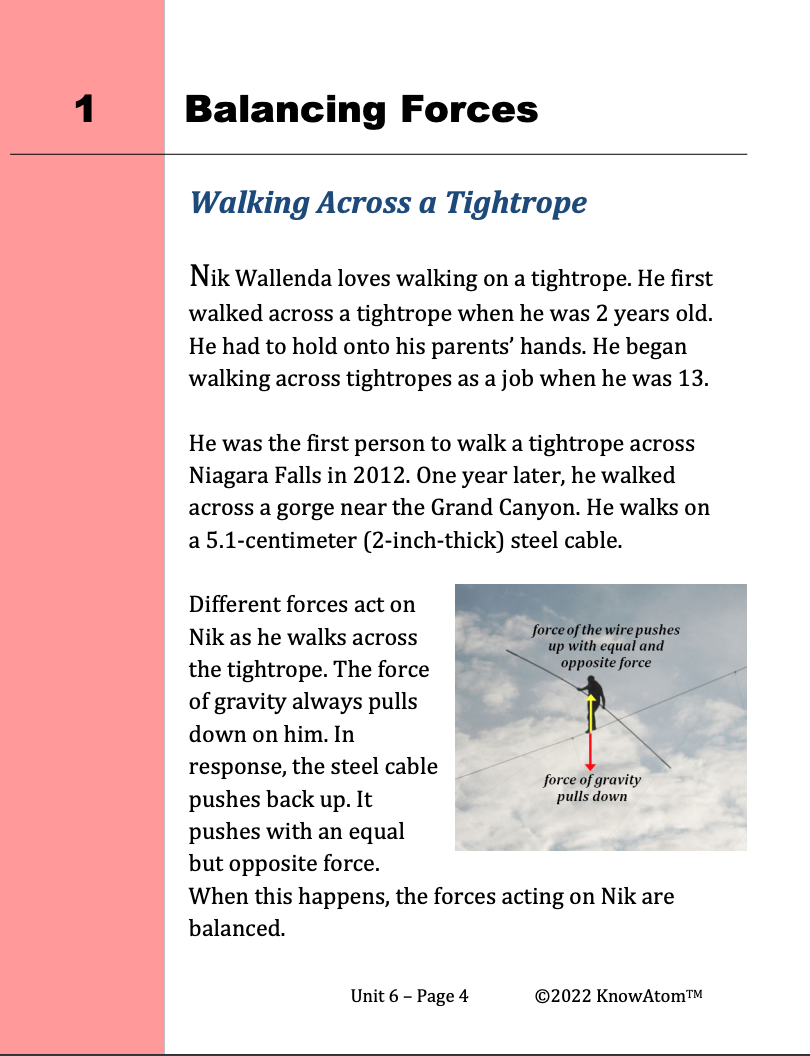
In this first unit, students learn to differentiate between the practices of a scientist and those of an engineer. Students ask questions, make observations, and collect data as they explore weather patterns on Earth and investigate how different Earth materials are heated by the sun. During this final lesson of the unit, students act as engineers by designing a prototype that can reduce the warming effects of the sun.

In Unit 2 of Kindergarten, students explore characteristics of living things and investigate what plants and animals need to survive. They will also discover plant and animal life cycles, and learn about habitats. This page is a high-level extract from lesson two, where students use patterns of shared characteristics to help them sort photos of different things into groups according to whether they are living, once-living, or nonliving.

In this Life Science unit, Kindergartners explore plants and what they need to live and grow. This page is a high-level extract of lesson four in which students make models of adult sunflower plants to explore how plants have different parts that help them get what they need to grow.

In the second unit of Kindergarten, students explore living things and discover what plants and animals need to survive. This page provides a snapshot of lesson five which has students conducting a class experiment with bean plants to observe what they need to live and grow.

In this unit, students are introduced to living things on Earth. They begin by exploring the differences between living and nonliving things and then investigate what plants and animals need to survive by watching bean plants grow and observing a cricket in its habitat. They then create a model to show how living things depend on other living things and their environment to survive, and can change their environment to help them get what they need.

In this unit, students are introduced to living things on Earth. They begin by exploring the differences between living and nonliving things and then investigate what plants and animals need to survive in their habitats. Now students take their understanding of animal habitats to then apply their understanding of the topic to consider how human shelter varies depending on where we live.

In the second unit of Kindergarten, students explore living things on Earth. They analyze the differences between living and nonliving things and then investigate what plants and animals need to live and grow. Following this, students explore human needs and activities and how those impact the planet.

In this unit, students explore how forces cause an object’s motion to change. They begin by exploring how objects move in different directions when they are pushed or pulled, and then investigate how changing the strength of a force changes the distance an object moves.

In the final unit of Kindergarten, students explore how forces and how different factors can affect an object’s motion. They explore how objects move in different directions when they are pushed or pulled, and then investigate how changing the strength of a force changes the distance an object moves. Finally, students discover how friction can change motion.

In this unit, students discover that pushes and pulls are forces that change the motion of an object. They begin by exploring how objects move in different directions when they are pushed or pulled, and then investigate how changing the strength of a force changes the distance an object moves. They then use a model to see how friction affects the distance and speed with which an object moves over a surface.

In this unit, students analyze the science phenomena of different forces that can act on all structures. They begin by exploring how forces act on different materials and shapes. They then use what they know about forces to design a skyscraper prototype in this lesson, evaluating how their design relates to the ability of the skyscraper to withstand the weight of the structure and the people on it, as well as the force of wind.

In this unit, students focus on the science phenomena of electric and magnetic forces. In this lesson, students build on their knowledge of forces by exploring electric forces. They analyze how materials can become either positively or negatively charged, and then use an electroscope to explore how opposite charges are pulled toward one another and like charges are pushed away from one another.

In this unit, students explore the science phenomenon of how materials can attract or repel other materials without touching them. In this lesson, they investigate how magnets can attract or repel certain objects within their magnetic field. This page highlights the key components of this lesson.
Standards citation: NGSS Lead States. 2013. Next Generation Science Standards: For States, By States. Washington, DC: The National Academies Press. Neither WestEd nor the lead states and partners that developed the Next Generation Science Standards were involved in the production of this product, and do not endorse it.
